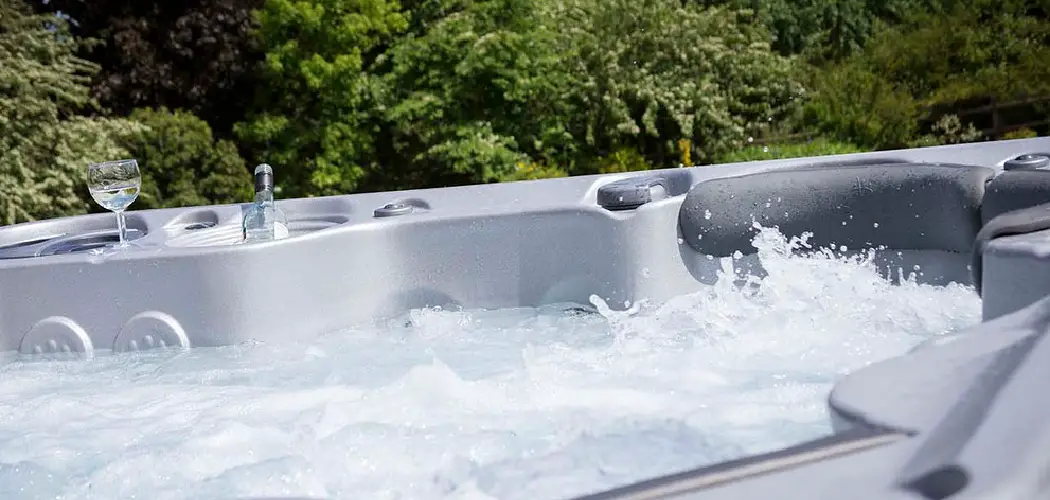Hot tubs are a great way to relax and unwind after a long day. However, maintaining the right balance of chemicals in your hot tub is crucial for both your health and the longevity of your hot tub. Chlorine is one of the most commonly used chemicals in hot tubs as it helps keep bacteria and algae at bay. However, too much chlorine can lead to skin and eye irritation, as well as damage to your hot tub’s equipment.
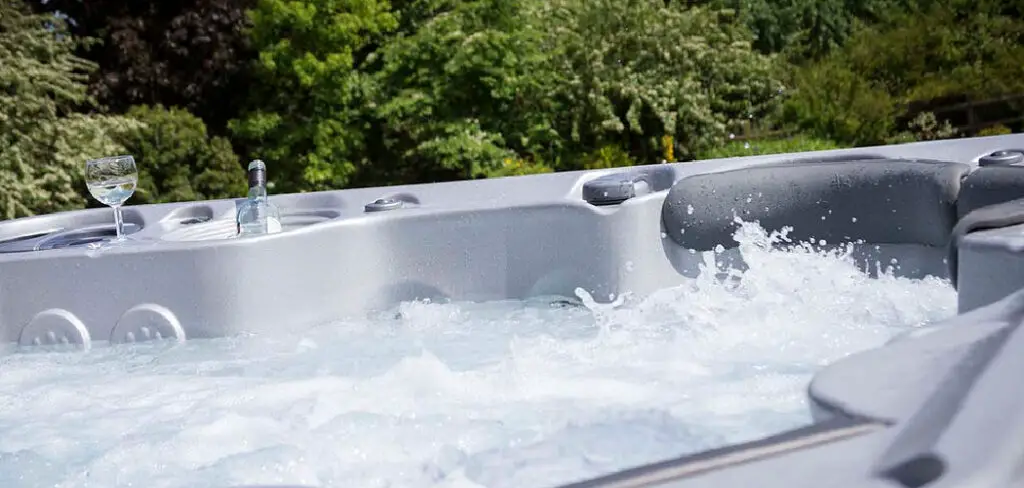
The main advantage of knowing how to lower chlorine in your hot tub is maintaining a safe and comfortable environment for you and your guests. By keeping the chlorine levels in check, you can avoid any unpleasant side effects such as skin and eye irritation or damage to your hot tub. Read this blog post to learn how to lower chlorine in hot tub.
Step-by-step Instructions for How to Lower Chlorine in Hot Tub
Step 1: Inspect the Chlorine Level
Before adjusting the chlorine level in your hot tub, it is essential to check the current levels. You can use a test strip or liquid test kit to measure the amount of chlorine in parts per million (ppm). The ideal range for chlorine levels in a hot tub is between 1-3 ppm.
Step 2: Identify the Source of Chlorine
The most common source of chlorine in a hot tub is through the use of chlorine granules, tablets or sticks. Other sources include bleach, shock treatment products, and mineral sanitizers. It’s important to know what type of chlorine you are using so that you can adjust accordingly.
Step 3: Add Neutralizing Agents
If your hot tub has an extremely high chlorine level, you can add neutralizing agents to reduce the amount of chlorine quickly. Examples of neutralizing agents include sodium thiosulfate and hydrogen peroxide. Follow the instructions on the product label for proper usage.
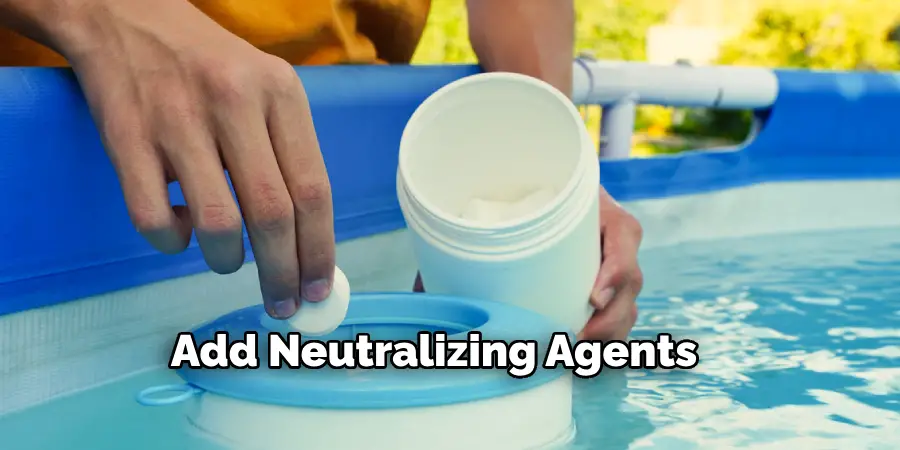
Another way to lower chlorine levels is by adding fresh water to your hot tub. This will dilute the existing chlorine and lower its concentration. It is recommended to drain and refill your hot tub at least every 3-4 months to maintain a healthy balance of chemicals.
Step 4: Use Activated Carbon Filters
Activated carbon filters can also help reduce the amount of chlorine in your hot tub water. These filters work by absorbing impurities, including excess chlorine. However, keep in mind that activated carbon filters need to be replaced regularly to maintain their effectiveness.
UV light sanitizers use ultraviolet radiation to break down chlorine molecules into smaller and less harmful particles. This process helps lower the overall chlorine level in your hot tub. However, UV light sanitizers can be expensive and require regular maintenance.
Step 5: Increase Aeration
Aeration is another way to reduce chlorine levels in a hot tub. By increasing the amount of oxygen in the water, it helps break down and dissipate chlorine molecules. You can do this by turning on jets or adding an air pump to your hot tub. High pH levels can cause chlorine to become less effective, leading to higher levels of chlorine in the water. Use a pH test kit to check and adjust the pH levels if necessary.
Step 6: Maintain Proper Water Chemistry
Proper water chemistry is crucial for maintaining balanced chlorine levels. Be sure to regularly check and balance other chemicals such as alkalinity, calcium hardness, and stabilizer levels to prevent fluctuations in chlorine levels.
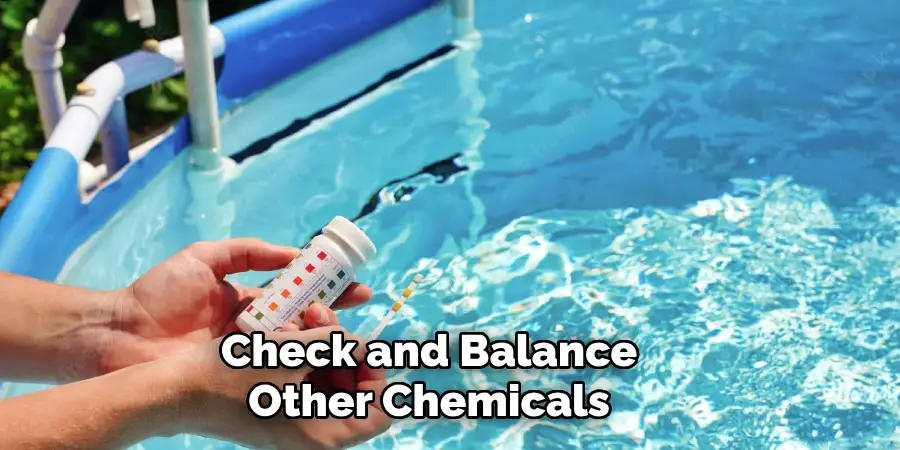
If you want to avoid using chlorine altogether, there are alternative sanitizers available such as bromine, mineral systems or saltwater systems. These options can be less harsh on the skin and have different maintenance requirements compared to traditional chlorine methods.
Overall, maintaining proper water chemistry and regularly checking and adjusting chlorine levels is essential for a clean and safe hot tub experience. By following these steps, you can effectively lower the chlorine level in your hot tub and ensure a relaxing and enjoyable soak every time.
Safety Tips for How to Lower Chlorine in Hot Tub
- Keep the hot tub closed when not in use. This will minimize exposure to the sun and prevent chlorine from dissipating.
- Wear protective gear such as goggles and gloves when handling chlorine products.
- Always handle chemicals in a well-ventilated area to avoid inhaling any fumes or vapors.
- Use measuring cups or spoons specifically designed for chemicals, and never use them for food or drinks.
- Never mix different types of chemicals together, as this can cause dangerous reactions and release harmful gases.
- Always add chemicals to water, never the other way around. Slowly pour the chemical into the water while the pumps and jets are running to evenly distribute it throughout the hot tub.
- Test the water regularly using a testing kit to ensure proper chemical levels. Adjust as needed to maintain a safe and comfortable balance.
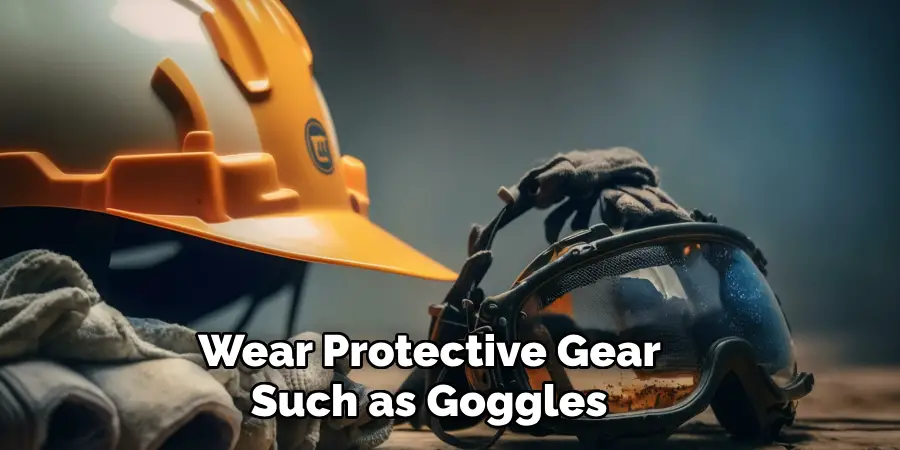
By following these safety tips, you can effectively lower the chlorine levels in your hot tub while keeping yourself and others safe from potential hazards. Remember to always read and follow the instructions on chemical products carefully, and never hesitate to ask for professional advice if needed.
Why is It Important to Maintain a Proper Chlorine Level in a Hot Tub?
Having the right amount of chlorine in your hot tub is crucial for maintaining a clean and safe environment. Chlorine acts as a disinfectant, killing harmful bacteria and preventing the growth of algae. It also helps to maintain proper pH levels, which can affect the effectiveness of chlorine in sanitizing the water. If there is too little chlorine, the water may become unhygienic and cloudy, while too much chlorine can cause skin and eye irritation.
Aside from health concerns, maintaining a proper chlorine level also helps to prolong the lifespan of your hot tub. High levels of chlorine can damage the hot tub’s components and require more frequent cleaning and maintenance. On the other hand, low levels of chlorine may allow bacteria and algae to thrive, leading to more frequent and extensive cleaning. By keeping the chlorine level in check, you can save time and money on maintenance in the long run.
Alternative Options for Lowering Chlorine Levels
If you prefer to use alternative methods for sanitizing your hot tub, there are a few options available that do not involve using chlorine. These include:
- Bromine: A common alternative to chlorine, bromine works similarly but causes less skin and eye irritation. It also has a longer lifespan in hot tub water compared to chlorine.
- Saltwater Chlorination: This method uses salt to produce chlorine, which is gentler on the skin and eyes. However, it does require a special system installed in your hot tub.
- Ozone: Ozone systems inject ozone gas into the hot tub water, killing bacteria and other harmful organisms. It is a chemical-free option but does require a separate system.
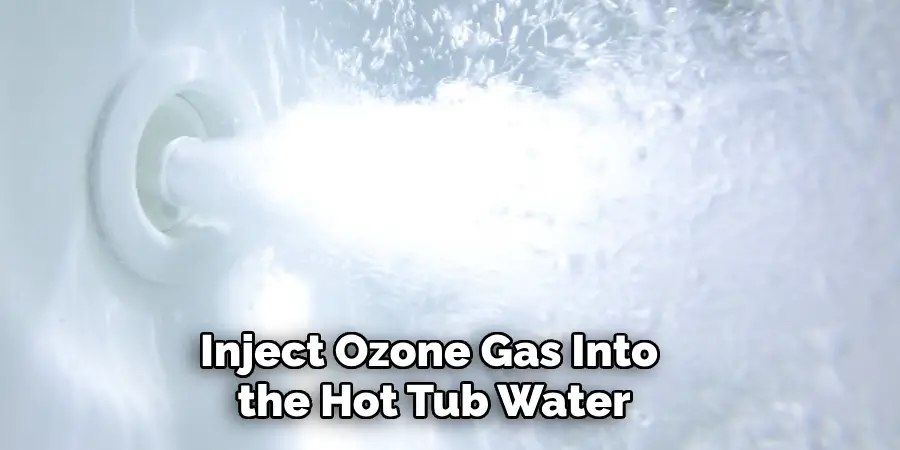
Considerations for Alternative Methods
While these alternative methods may be more appealing to some hot tub owners, there are a few things to keep in mind before switching from traditional chlorine treatment:
- Cost: Depending on the size of your hot tub and your usage, alternative methods may be more expensive in the long run.
- Maintenance: Some of these methods, such as saltwater systems, require additional maintenance and upkeep to keep them running properly.
- Effectiveness: While they may be gentler on the skin and eyes, alternative methods may not be as effective at killing harmful bacteria and keeping the water clean. It is important to regularly test the water and adjust accordingly.
Ultimately, it is a personal choice whether to use chlorine or alternative methods for sanitizing your hot tub. Whichever method you choose, be sure to properly maintain and regularly test the water to ensure a safe and enjoyable soaking experience.
What Are the Potential Health Risks Associated With High Levels of Chlorine in a Hot Tub?
Chlorine is a commonly used chemical in hot tubs to maintain clean and bacteria-free water. However, when chlorine levels become too high, it can pose various health risks for hot tub users. In this section, we will discuss the potential health risks associated with high levels of chlorine in a hot tub and how to lower chlorine levels to ensure a safe and enjoyable hot tub experience. High levels of chlorine in a hot tub can cause skin irritation, including itchiness, rashes, and dryness.
This is because chlorine is a strong chemical that can strip the natural oils from our skin, leaving it vulnerable to irritation. In some cases, prolonged exposure to high levels of chlorine can also lead to more serious conditions such as eczema or dermatitis. Moreover, inhaling high levels of chlorine gas while using a hot tub can irritate the respiratory system and cause coughing, chest tightness, and difficulty breathing. This is especially concerning for individuals with asthma or other respiratory conditions as it can exacerbate their symptoms.
How Can You Prevent High Chlorine Levels From Occurring in Your Hot Tub in the Future?
To lower chlorine levels in your hot tub, there are a few simple steps you can take. First, test the chlorine level using a reliable testing kit and ensure it falls within the recommended range of 3-5ppm (parts per million). If the reading shows higher levels, you can use shock treatments or non-chlorine alternatives such as bromine to bring the levels down. It is essential to carefully follow the instructions and recommended dosage for any chemicals used in your hot tub, as using too much can also lead to high chlorine levels.
Another way to lower chlorine levels is through dilution. This method involves draining some of the water from your hot tub and replacing it with fresh water. However, this option may not be ideal if you have limited access to water or if your hot tub is located in an area with strict water restrictions. In addition to these methods, it is crucial to regularly clean and maintain your hot tub’s filter. A dirty or clogged filter can prevent proper circulation of the water, leading to higher chlorine levels. Additionally, make sure to shower before using the hot tub as dirt, oils, and other contaminants on our bodies can react with chlorine and cause high levels.
Are There Any Common Mistakes People Make When Trying to Lower Chlorine Levels in Their Hot Tubs?
Yes, there are a few common mistakes people make when trying to lower chlorine levels in their hot tubs. One of the most common mistakes is adding too much shock treatment or non-chlorine alternatives. As mentioned earlier, it is essential to carefully follow the instructions and recommended dosage for these chemicals as using too much can lead to high chlorine levels.
Another mistake is not regularly testing and maintaining the hot tub’s water chemistry. Neglecting this can lead to a buildup of contaminants, causing the chlorine levels to spike. It is recommended to test your hot tub’s water at least once a week and make necessary adjustments accordingly.
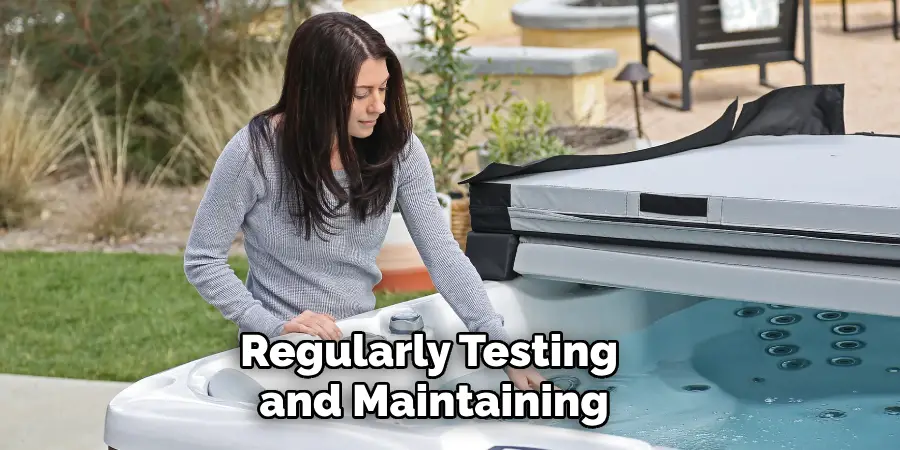
Lastly, some people may try to lower chlorine levels by simply turning off their hot tub’s circulation system. However, this method is not effective as it allows bacteria and other contaminants to build up in the water, leading to potential health risks. It is crucial to keep the hot tub’s circulation system running regularly for proper filtration and sanitation.
Conclusion
In conclusion, maintaining the right chlorine levels in your hot tub is crucial to ensure a safe and enjoyable soaking experience. While high levels of chlorine can cause irritation to the skin and eyes, low levels can lead to bacteria growth and potential health risks. In this blog post, we have discussed various methods on how to lower chlorine in your hot tub. Some options include using non-chlorine shock, adding ascorbic acid or baking soda, and using a mineral sanitizer.
It’s important to regularly test the water and adjust chlorine levels accordingly to maintain a safe and enjoyable hot tub experience. Remember to also follow proper maintenance and cleaning procedures for your hot tub to prevent any issues with chlorine levels. I hope this article has been beneficial for learning how to lower chlorine in hot tub. Make Sure the precautionary measures are followed chronologically.
About
Outdoor Fixes is a distinguished figure in the world of Diy design, with a decade of expertise creating innovative and sustainable Diy solutions.
His professional focus lies in merging traditional craftsmanship with modern manufacturing techniques,
fostering designs that are both practical and environmentally conscious. As the author of diy,
outdoorfixes delves into the art and science of outdoorfixes-making, inspiring artisans and industry professionals alike.
Education RMIT University
(Melbourne, Australia) Associate Degree in Design (Outdoor Fixes) Focus on sustainable design, industry-driven projects,
and practical craftsmanship. Gained hands-on experience with traditional and digital manufacturing tools, such as CAD and CNC software.
Nottingham Trent University
(United Kingdom) Bachelor’s in outdoorfixes.com and Product Design (Honors) Specialized in product design with a focus on blending creativity with production
techniques. Participated in industry projects, working with companies like John Lewis and Vitsoe to gain real-world insights.
Publications and Impact
In diy, Outdoor Fixes his insights on indoor design processes, materials, and strategies for efficient production.
His writing bridges the gap between artisan knowledge and modern industry needs, making it a must-read for both budding designers and seasoned professionals.

